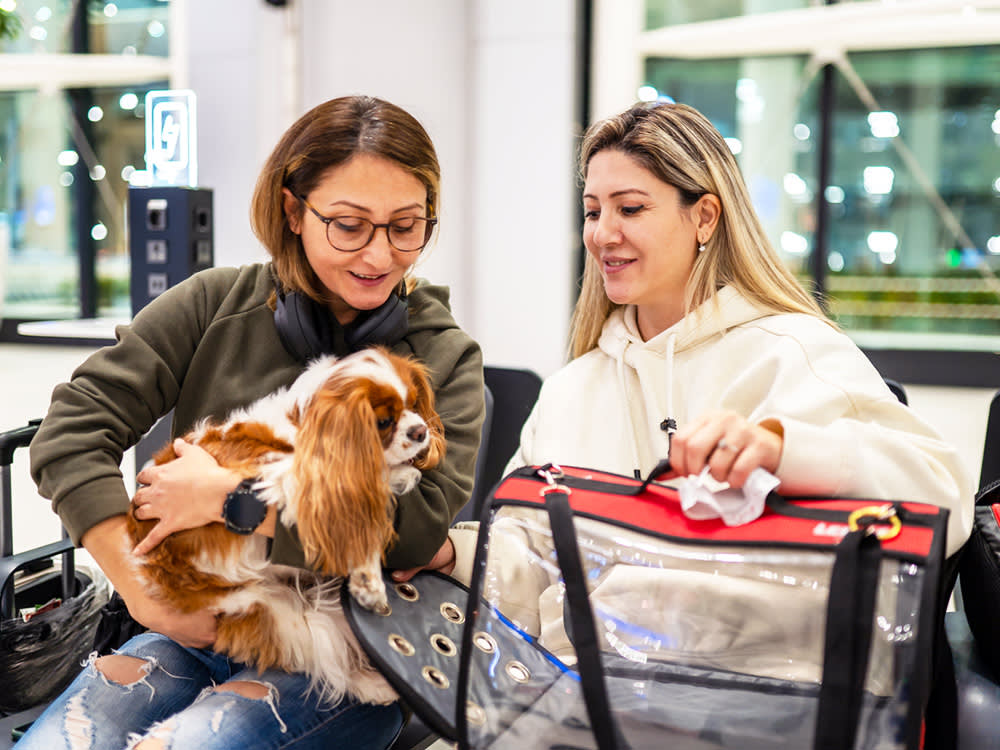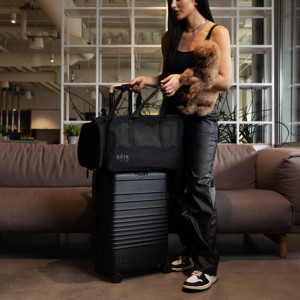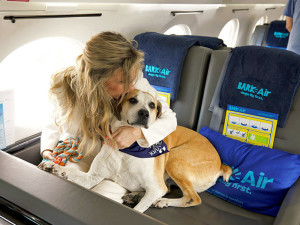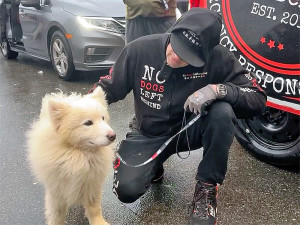Why You Should Adopt a Dog From (or Donate to) an International Rescue Organization
Without the advocacy they need, these animals rely on Americans for help.

Share Article
In March of this year, the SPCA International opens in a new tab pulled off its largest international rescue opens in a new tab ever based in the United States. The organization transported 70 dogs in war-torn Palestine — 10 from Bethlehem Animal Shelter opens in a new tab and 60 from Daily Hugz Animal Sanctuary opens in a new tab — flying them 35 hours to American soil, where they were sent to various rescues around the country. This operation required “the tenacity of nearly 100 people and $275,000,” reports the opens in a new tab.
The treacherous feat underscored the urgency and scope of efforts to save animals (notably dogs and cats) across the globe: from conflict-ravaged locations, countries with a staggering abundance of strays, or places notorious for animal neglect. All operational derring-do aside, the outreach is costly and requires rescue workers to navigate reams of governmental red tapeopens in a new tab. At the end of the day, they rely on everyday Americans to bolster their missions through donations and to adopt these saved pets into their homes.

littleKin™ is Kinship’s home just for puppy and kitten parents. Bop over to check out expert advice, new pet tools, and special deals—all curated for your newest family member.
opens in a new tabLet’s stamp out the stereotypes.
Dogs rescued from outside the States, in particular, face some unfair, irrational stigmas. For instance, potential pet parents may not realize that a dog from another country is just the same as a dog born in the U.S. They’re loyal, appreciative of your kindness, and if anything, smarter and more trainable due to their keen survival skills.
“These dogs are just so loving. I mean, how many times have you seen a video of somebody going up to a dog on the street and its tail is wagging?” explains Helen Summerfield-Brown, who runs the nonprofit Wisconsin-based Stray Dog Supportopens in a new tab, which has saved dogs from India, Mexico, Thailand, Philippines, Brazil, Pakistan, Iraq, and more. (She herself is pet parent to four strays: three from India, another from Thailand.)
“There may be a little bit of resource-guarding… and territorialism towards other dogs. But there is a very, very, very, low incidence of them hurting people,” Summerfield-Brown says. Why? Because as much as they may have been wronged by people, they’ve also relied on the kindness of human strangers to get by.
“People ask, ‘Why do you rescue dogs internationally when the shelters are full hereopens in a new tab?’” she says. “I tell them that there are a ton of rescue organizations within the United States fighting for these dogs [at home]. But internationally, they have absolutely no protections, and the people fighting for them are somewhat powerless to do anything because they are often poor.”
But, to be clear, those locals are pivotal to international rescues, such as hers. “You align yourself with good people on the ground,” Summerfield-Brown explains, when asked how she can pull off a tricky mission in, say, Iraq. “There are veterinarians on every corner here. In some places, to get an X-ray for an animal, I have to sneak it into a hospital at night.”
Once saved, an animal will live at a sanctuary location near their original home, where they’ll be medically evaluated, treated (if needed), spayed/neutered, and given all the important vaccines. In the case of Stray Dog Support, they’ll also be put in local foster homes to get comfortable with domestic living.
“We work very hard on the front end to make sure that the behavior of the dog is suitable.” Once a pet is ready to come Stateside, the rescue will also take care of all the paperwork and permits to legally welcome them into the U.S.
Fundraising is crucial (and how to avoid scams).
To make the rescue as easy as possible for a potential adopter, Summerfield-Brown fundraises for this whole process, which she estimates can cost up to $5,000 per dog. “I charge a $500 adoption fee,” she says. “For me, that just covers the price of a crate and a few vaccines, some medical records.” In the end, the pet parent’s only task is to welcome a new, well-traveled pet into their home.
This is why donations go a long wayopens in a new tab with international rescues, which rely almost exclusively on financial contributions. If you’d like to donate to a rescue you’ve read about or seen on social media, Summerfield-Brown suggests checking either Charity Navigator or hitting the IRS’ “ Search for Charitiesopens in a new tab” tool — both of which will weed out scams by verifying your money is safely going to a legitimate 501(c)(3) nonprofit.
She also offers a few other ways to sniff out frauds. “You can see when they first started on social media, and their posts will typically have the same sort of flare like, ‘Give me money, give me money, give me money with no real updates.’ Or ‘No donation received for this animal,’” she says. “And their links are typically to their personal PayPal account. So, check the links to make sure it’s not to some personal account.“
Despite how much logistics, budgets, and training are involved, this process is designed to be a wholly stress-free process for any pet parent. “I find it more of an experience than just a transaction for the adopter,” Summerfield-Brown says. “You are heavily involved in the whole process of seeing how the animal was healed, the strength of that animal.”
Most folks adopt pets for emotional supportopens in a new tab, good vibes, and life-affirming reminders each day — and that is exactly what you get with an international rescue. “It’s an overwhelming feeling, really. This pet has overcome such adversity, and you’re a part of that.”
References:
Dogs Saved From West Bank Are Up for Adoption in Detroitopens in a new tab

Nisha Gopalan
Nisha Gopalan has been a writer/editor for The New York Times, New York magazine, Entertainment Weekly, Variety, The Hollywood Reporter, and NYLON magazines. She currently resides in Los Angeles.
Related articles
![A woman standing next to a suitcase with a dog carrier on top while holding her dog.]() opens in a new tab
opens in a new tabThe Best Dog Carriers For Planes, Trains, and Automobiles
Whether you’re driving cross country or flying internationally, your pup can comfortably tag along.
![anonymous woman pampering and taking care about a small ginger kitten]() opens in a new tab
opens in a new tab6 Ways to Help Local Shelters Without Committing to Full-Time Pet Parenthood
Learn how you can be there for animals in need this National Pet Day.
![Woman getting ready to travel with her small brown dog at the airport.]() opens in a new tab
opens in a new tabThe CDC Has Relaxed Their Rules for Bringing Dogs Into the US—But Not Entirely
The restrictions create financial and logistical challenges for animal welfare organizations.
![A woman staring at her computer while holding her dog close.]() opens in a new tab
opens in a new tab10 Things to Consider Before Adopting a Pet
It’s a big decision, so check these boxes before you sign on the dotted line.
![BARK Air is here to deliver a white paw experience. We built our flight experience for dogs first, from the ground up.]() opens in a new tab
opens in a new tabBARK Air Is a New Dog-Friendly Airline—But the Prices Are Sky High
Your dog will get their own puppy concierge to make sure all their in-flight needs are met.
![No Dogs Left Behind organization and a rescued small fluffy dog.]() opens in a new tab
opens in a new tab50 Dogs and Cats Were Rescued from the Yulin Dog Meat Festival
The animals were going to be slaughtered as part of the notorious event—now they’re looking for loving homes.







